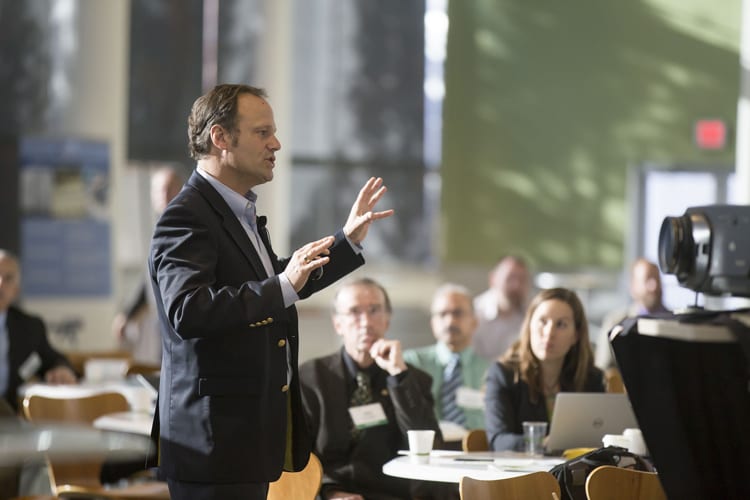The best public speakers are storytellers. Just look at the popularity of TED Talks. However, while your workplace presentations might not become a TED Talk yet, here’s how yours can have the same impact by moving from speaking to the mind to capturing the heart.
Diane DiResta, author of “Knockout Presentations,” offers the following six tips on how to use the same presentation techniques that TED Talk speakers excel at:

1. Grab attention with a hook. In childhood, the hook was Once Upon a Time. For adult audiences, open with a problem or a desired dream. You’ll know you have it when you see the audience nodding.
2. Engage all the senses. Build a scenario that is visual, auditory, and kinesthetic. That means they can picture you in a scene, they can hear what you would hear and they can feel what it was like for you. When I tell the story of first meeting Charlie, I describe his limp, jellyfish handshake. It was like shaking hands with a squid. As I describe that handshake, I can see the audience grimace. Sometimes I hear groans. That’s because the audience is experiencing that weak handshake viscerally with me.
3. Create conflict. Most movies and stories follow a pattern. In its simplest form, it would be Boy Gets Girl, Boy Loses Girl, Boy Gets Girl Back. Without the tension of conflict, the story falls flat. Take your listeners on a journey from high to low to high.
4. Break the pattern. The audience will expect a logical, linear flow which means they will tune out because the pattern is predictable. So use a “pattern interrupt” to shock them out of complacency. Think of a movie that has an unexpected twist at the end. When I finish telling the story of meeting Charlie and his limp handshake, I add that when I told this story to an audience of 100, a man in the audience raised his hand and said… At that moment I hear gasps because the audience expects that it’s Charlie in the audience. I then finish by saying, “He pointed to the person next to him and said, “This woman wants to know if you still have Charlie’s phone number.” It gets a laugh. They weren’t expecting that twist.
5. Use analogies and metaphors. Rock star, Bruce Springsteen, wrote a line in his song I’m on Fire that goes..
“At night I wake up in the middle of the night with the sheets soaking wet with a freight train running through the middle of my head.”
That metaphor of a freight train is a vivid description of a hangover or headache. He could have said:
“I woke up at night sweaty with a bad headache.” Which is more powerful? Which do you feel?
6. Get Personal. Nothing is more compelling than telling YOUR story. A good actor can tell someone else’s story as if it were her own, but most of us don’t have that skill level. There is an element of vulnerability when telling a story. The audience will connect with a public speaker faster and more intently when that presenter reveals herself. Take your audience on your journey. By sharing your flaws and mistakes you become more relatable and authentic. Then bring them with you on your path to success.
Talk facts and the audience may nod. Tell a story and they’ll stand and cheer. And that’s the power of story to connect heart and mind to make impact!




